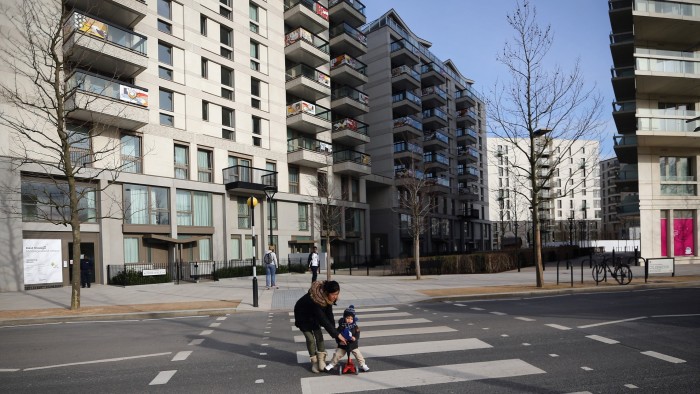Stay informed with free updates
Simply sign up to the Property sector myFT Digest — delivered directly to your inbox.
London’s former Olympic Village suffers from fire safety defects that will cost £432mn to fix, according to the estate’s management company, after new problems were found inside the buildings.
East Village Management Limited (EVML), which is responsible for fire safety and managing the common parts of the Olympic estate, increased its fire safety provision by £337mn from £95mn, according to its annual report for the year to March 2024 published this week.
The company said the bulk of the funds was needed after surveys showed fire safety defects within the “internal fabric of the buildings,” which were built for the government and sold off as private and affordable accommodation after housing athletes for the 2012 Olympic Games.
The latest provision highlights the fire safety and financial risks to residents and investors still present in buildings across the UK nearly eight years after the deadly Grenfell Tower fire prompted a national reckoning.
The chief executive of Get Living, the largest shareholder in the estate’s management company, said that issues with internal walls created “risks that fire could spread from one apartment to another”.
But Rick de Blaby said that all homes were safe to live in, with mitigation measures such as fire watches, alarms and sprinklers, and that the size of the provision determined by EVML’s auditor and board was “in our view vastly overstated”.
EVML’s two largest shareholders are currently embroiled in a high-profile legal dispute about who should pay for certain fire safety costs.
Get Living, a rental housing business, is the freeholder of the £1bn estate and majority owner of EVML. The minority shareholder is Triathlon Homes, the leaseholder and management company for the estate’s roughly 1,400 affordable apartments.
EVML’s ability to charge leaseholders for fire safety works is limited under building safety legislation, which the company said “creates an uncertainty as to how the company’s future costs in respect of the required fire safety works would be funded”.
De Blaby said EVML would pursue “50 odd of the . . . contractors and consultants” who worked on the construction of the estate to recover funds.
However, as the freeholder, De Blaby acknowledged that Get Living would also have to shoulder some costs and said the company would take a provision in its next annual report. Get Living can also seek recoveries from third parties.
EVML said in a statement that it would use legal remedies to “proactively seek funding from . . . Get Living”.
“Our independent fire risk assessors have stated all homes remain safe to occupy. The provision . . . reflects careful and prudent planning for the estimated scale of work required across the 63 buildings that we manage,” EVML added.
Triathlon said it was “pleased that EVML recognise the scale and cost of the remediation required. But we now need this remediation to be done to ensure our residents are safe”.
The parallel legal case between Get Living and Triathlon is being closely watched as a precedent for how the UK’s new building safety legislation should be applied.
Angela Rayner, the UK housing secretary, has intervened in the appeal to argue that building safety costs can be imposed retrospectively on current freeholders of property.
Get Living argued it should not have to pay certain costs because it was not responsible for the construction of the buildings, which it bought after the 2012 Games.
Triathlon contends that the structure of the deal meant Get Living chose to assume responsibility for liabilities that came with the purchase.
The Property Tribunal found in Triathlon’s favour in January, ordering Get Living to pay £18mn. Get Living has appealed.




